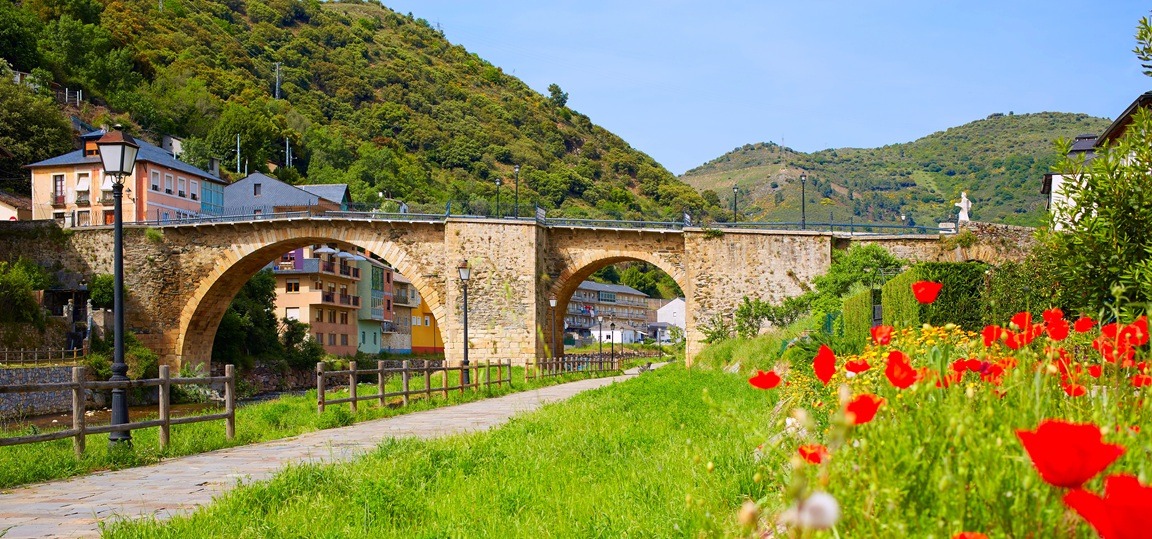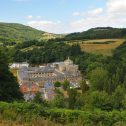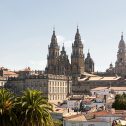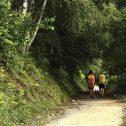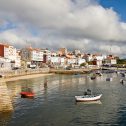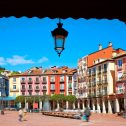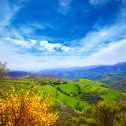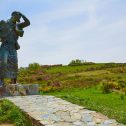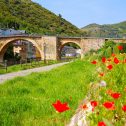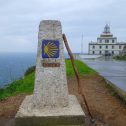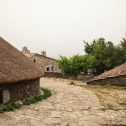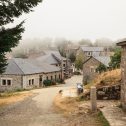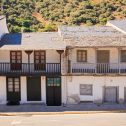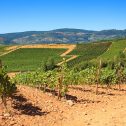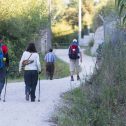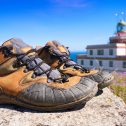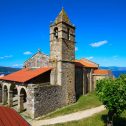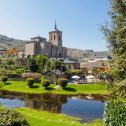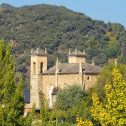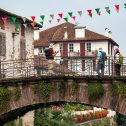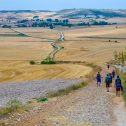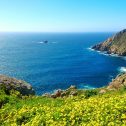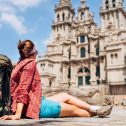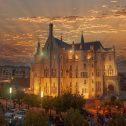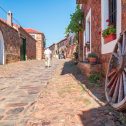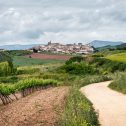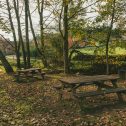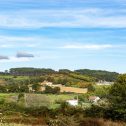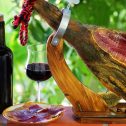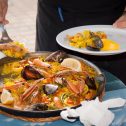Overview
Perhaps the most famous walking route in history is the Camino de Santiago, or Way of Saint James, a medieval pilgrimage route in Spain that leads to the tomb of the Apostle Saint James the Greater. Originating in the 9th century, it is Europe’s oldest and best known pilgrimage route, walked by over 250,000 pilgrims each year since the 12th century. Traversing the Spanish countryside from the French border all the way to the Atlantic Ocean, the Way crosses scenic landscapes and passes through dozens of historic towns and villages. Around 500 miles in length, normally it takes between 30 and 40 days to walk the entire route. We’ve found some of the best sections of the route, pieced them together with stays at unique, upscale 3, 4, and 5 star inns and properties along the way, and added local tours, amazing meals, wine tastings and plenty of free time to explore the towns we pass through. You’ll have full-time local guides and a support vehicle when you want to ride instead of walk. Best of all, on your journey you’ll enjoy the camraderie of not only your group, but of pilgrims from all over the world!
This small-group walking, hiking, and cultural adventure is for between 6 and 18 people, which is a perfect size for this type of adventure. Fully guided by an expert local Go Get Lost hiking guide.
Tour Dates & Pricing
Photo Gallery
Click the thumbnail to view larger image.
- View of vineyards in the Spanish countryside, territory of Villafranca del Bierzo
- Pilgrims with backpack walking the Camino de Santiago, Saint Jean Pied de Port in Pays Basque, France, Europe
- Cape Finisterre, Galicia, Spain, landscape and ocean view. Travel and Tourism in Spain.
- top view of table diner with tapas food – friends people eating and grabbing appetizer sitting around together
Itinerary
Day 1: Bilbao to Rioja
Your tour departs this morning after breakfast from our meeting point in the hotel lobby in Bilbao. (You might plan to arrive in Bilbao the day before the tour starts in order to get over your jet lag and prepare for your adventure.) We will have a private group transfer through Northern Spain's scenic countryside to the unique church of St. Mary of Eunate, amidst the vast fields of Navarra. Its striking architecture and air of mystery make it one of the most intriguing stops for pilgrims and hikers, and a perfect spot to start your epic journey.
Our first walk today will be on the Camino Aragones as it joins Camino Francés. The countryside is rural and peaceful, mostly flat and mostly downhill. Farm fields are interspersed with wooded areas and rolling hills, and in spring and early summer you'll have wildflowers to admire. We'll end up at the town of Puente la Reina, a small city that takes its name after a bridge over the river Arga, whose construction was ordered in the 11th century by Muniadona, the wife of Sancho III, with the intention of facilitating the crossing of the river for pilgrims. At the town entrance, next to the Iglesia del Crucifijo, the Knights Templar built a hospital for pilgrims, which today still serves as an inn. You'll have lunch in the town and then have the option to relax and explore the town, or continue on for another leg of hiking. Later this afternoon we'll make our way into the famed Rioja wine region, known for its beautiful landscape and stunning wineries. A stop for a wine tasting at one of the world's most famous avantgarde cellars, the Marques de Riscal, designed by Frank O. Gehry is the perfect introduction to the wines of the region.
Tonight will find you ensconced in your cozy inn amidst the historic buildings of Laguardia, a medieval walled town known as one of the most beautiful in Spain. We'll meet later for a dinner at one of the town's amazing restaurants.
Northern Spanish cuisine is diverse and influenced by the region's proximity to the Atlantic Ocean and the Pyrenees Mountains. It's known for its rich seafood dishes, hearty stews, and unique tapas called pintxos. Key ingredients include fish, beans, potatoes, and locally produced wines.
Today's first hike is rated EASY, with a total distance of 3.1 miles, an elevation gain of 158' and an elevation loss of 310'. The trail is wide and hard-surfaced, often a country road. Today's optional second hike is rated EASY, with a total distance of 3.8 miles, an elevation gain of 370' and an elevation loss of 105'. The trail surface is similar to the first trail.
Day 2: Navarette to Burgos
We'll start our day with a visit to the captivating town of Navarette, rich in history and culture and farmous for its deep-rooted traditions of pottery and wine making. Here we'll see the stunning Baroque church of St. Mary, known for its architecture and incredible art collection. The nearby picturesque village of Najera, former capital of the Kingdom of Navarre, is home to another "can't miss" site, the Monastery of Santa Maria la Real, founded in 1052 and one of the most historic and important places in the region. After a brief visit here we'll begin our hiking on the Camino, heading for the town of Azofra. Along the way we'll have wide open views of farm fields, vineyards and the rolling hills of the region. In Azofra we'll stop for lunch in a local eatery, then board our private coach for the short drive to Santo Domingo de la Calzada, one of the most iconic pilgrim towns on the Camino.
This charming city, with its rich tapestry of history and cultural heritage, stands as a testament to the enduring spirit of Spain’s past. From the cobblestone streets that whisper tales of medieval pilgrims to the architectural marvels that have stood the test of time, Santo Domingo de la Calzada offers an immersive experience into the heart of Spanish tradition and history, and it's the perfect place for some free time to go get lost and explore a bit on your own.
Later we'll continue our journey with a scenic ride across the undulating Spanish countryside to the charming Cathedral city of Burgos, located in the Spanish region of Castile and León and nestled along the banks of the River Arlanzón. Founded in 884 AD as a military outpost, Burgos has amassed centuries of rich and intriguing history. During the Middle Ages it became a prosperous mercantile city with a significant amount of commercial influence. Between the 10th and 15th centuries Burgos was the capital of the unified kingdom of Castile and Leon. The city has unfortunately witnessed many wars over the centuries, from fighting with the Moors and even up to the Spanish Civil War in the late 1930s; General Franco’s rebel nationalist government was based in Burgos, and today it's one of the most important sites along the Way of St. James. After checking into our lovely 4 Star hotel we'll have time to freshen up and relax.
later we'll meet for a fascinating walking tour of the famous Cathedral and the historic center. The evening is free to wander and explore on your own, Burgos has plenty of excellent restaurants to choose from for dinner.
Today's countryside hike is rated EASY, with 160' of elevation gain and 320' of elevation loss, with a total distance is 3.8 miles. The walking tour of Burgos is also rated EASY, the distance will depend on the route but the total time will be approximately 1.5 hours at an easy pace, with plenty of stops.
Day 3: Leon
Our morning hike starts in the picturesque and historically important village of Castrojeriz, considered one of the main landmarks of the Camino de Santiago. It is a beautiful village of ancient origins, probably Roman or Visigoth, and every pilgrim will be familiar with its castle, clearly visible from the road, which was a witness to many battles between Moors and Christians. Our walking route today leaves the village and soon begins a short but steep climb to the Mostelares viewpoint with excellent views of the Spanish Mesata (huge plains) ahead. Our path becomes downhill and then flat for the rest of the morning as we wind our way across the vast landscape toward the Hermitage of San Nicolas, a simple hostel with no electricity but popular with pilgrims for overnight stays.
We'll have lunch in a nearby town, then board our coach for a relaxing ride to Leon, a cathedral town was once the heartbeat of a great kingdom but now is a sleepy provincial city off the beaten track. León today is the gateway from Old Castile to the northwestern routes of Galicia, and nearly everything of interest can be covered on foot. Its wealth of old monuments and a certain regal atmosphere make the town still feel like the capital. We'll check in to our hisotric and luxurious 5 Star Parador hotel for the evening, with time to relax and enjoy the atmosphere. Later this evening we'll meet for a guided walking tour of the old town and cathedral, followed by dinner at the restaurant of the Parador. The cuisine on offer at the iconic Parador de León - Hostal San Marcos is based on the rich and varied traditional cuisine of León with a modern twist.
Today's hike is rated EASY/MODERATE, 5.6 miles total with 460' of elevation gain and 525' of elevation loss. Most of the trail is flat with the exception of the climb and descent to the Mostelares viewpoint. The trail surface is mostly hard-packed country roads, with expansive views over the open farmlands and countryside. The walking tour of Leon is rated EASY, the distance will depend on the route but the total time will be approximately 2 hours at an easy pace, with plenty of stops.
Day 4: Villafranca de Bierzo
This morning after breakfast we'll hop on our private coach for some village visits...first is the historic town of Astorga, famous for Antonio Gaudi's famous bishop's palace. We'll have time for a quick look before heading to the nearby medieval village of Castillo de los Polvazares where we'll explore a bit. Only a short distance away is our trailhead at the town of Rabanal del Camino, at the foot of Mount Irago in the Bierzo Mountains. Rabanal is one of those “miracles of the Camino” of which all pilgrims speak: a town that today maintains its traditional architecture in good condition and an enormous economic and social vitality, after decades of abandonment, depopulation … The Camino de Santiago did the miracle! Its traditional inhabitants were “maragato” people, or muleskinners or carriers whose job it was to transport goods or materials. The origin of Rabanal del Camino is linked to the pilgrimage to Santiago but also to the Knights Templar, probably because some of these soldier- monks settled in the town as an outpost of the Templars in Ponferrada with the task of protecting the pilgrims who were crossing the Montes de León on their way to El Bierzo.
The landscape on our trail today is rolling hills, often covered by scrubby brush and woodlands. We'll pass through a few small villages that were nearly abandoned, but the Camino Frances keeps them alive. We'll end our hike at the iconic symbol of the journey, the Cruz de Ferro or Iron Cross, a large iron cross that stands at the highest point along the Camino. It is a reminder of the hardships and challenges that pilgrims face on their journey. The Iron Cross also represents the spiritual renewal that pilgrims seek on their journey. The tradition of leaving a stone at the foot of the Iron Cross is a powerful symbol of the pilgrimage journey and the spiritual transformation that can occur. Those wanting to add a bit more to their walking today can continue on a downhill trail to the mostly-ruined village of Manjarin, population 1. It's still a popular place for a stop on the trail for it's abundance of signposts and eclectic atmosphere. Our walk ends at Manjarin, so after time for a visit we'll make our way to a nearby town for a coffee stop, then on to our home for the night, the quaint mountain town of Villafranca del Bierzo. Here we'll check into our beautiful Parador hotel and have time to relax before sitting down to another amazing dinner of Northern Spanish cuisine.
Today's first hike is rated MODERATE, a gently ascending country road and path with 1125' of elevation gain, with a total distance is 4.7 miles. The second hike is rated EASY, with a distance of 1.5 miles, generally downhill with an elevation loss of 205'.
Day 5: Galicia
We start our Camino trail today in the hamlet of La Faba. Some of the trail is a wide, rocky path, and some is a tiny paved road, but always heading uphill towards the town of O Cebreiro. This is the longest and steepest uphill part of your tour, but it may also be the most scenic. You're in the Bierzo mountains with stunning views in all directions of forested ridges and verdant pastures. You'll have plenty of opportunities to stop and admire the view as we'll go extra slow and take ample breaks. As you walk today you'll cross into the Spanish region of Galicia, leaving behind the region of Leon and Castile with its arid landscape and expansive plains. Galicia is typified by a lush, green environment, occasional rainfall and cooler temperatures. The inhabitants speak Gallego, a combination of Spanish and Portuguese. Even the cuisine changes here!
Our goal is the quaint village of O Cebreiro, a fairytale-like town perched on the top of a high ridge. Walking along its streets you'll feel like you went back in time, or stepped into a set for a fantasy movie. Odd stone houses with thatched roofs house the tiny population of just 26 inhabitants. It's reknown for its occasional harsh weather, and for providing shelter for pilgrims since 1072. O Cebreiro is also rumored to have been the home and hiding place of the Holy Grail during medieval times. We'll have time for a rest and a coffee here, then maybe a stroll to admire the unique houses. Those wanting to continue their hiking can set off again on the Camino, this time slightly downhill (more or less). The route will lead you to the famous Alto de San Roque, the titanic bronze statue of a windswept pilgrim atop the hill. Our coach will pick you up here and take you for the short ride to the town of Samos, where you'll have an excellent lunch in a stunning monastery.
This afternoon we can relax for a scenic ride to our home for the evening, a wonderful 17th century manor house situated in the countryside. We'll have a wonderful group dinner tonight in the peaceful surroundings of rural Galicia.
Today's first hike is rated MODERATE, alternating between an ascending country road and rocky path with 1266' of elevation gain and a total distance of 3 miles. The second hike is rated EASY, with a distance of 2.9 miles, slightly downhill with an elevation gain of just 131' and an elevation loss of 233'.
Day 6: Santiago
Today is the day! As we begin walking from the town of Arzua, we'll see more and more pilgrims as we get closer to Santiago. Although we'll walk along dirt paths and through some wonderful eucalyptus forests, we'll also begin to have larger roads to cross as we approach the city. Our first leg ends at the typical Galician town of A Calzada where we'll meet our coach for the short ride to Monte do Gozo (Hill of Joy), where we get our first view of the three spires of the Cathedral of Santiago de Compostela. Our final leg begins here...we'll live the experience like millions of pilgrims before us as we arriving into Santiago on foot and make our way through the streets to the Cathedral of St. James.
Pleanty of time for pictures, rejoicing, and soaking up the ambiance as pilgrims from all over the world gather. Truly a special moment in a special place!
Later in the day we'll meet a local guide for a walking tour of the historic center of Santiago and its famed cathedral. Tonight is free to wander and get lost, as no doubt many other pilgrims are doing.
Today's first hike is rated EASY/MODERATE, 3.6 miles total with 394' of elevation gain. The trail surface alternates between country roads and some hard-packed dirt paths. The second and final hike into Santiago is rated EASY with an elevation gain of 165', and elevation loss of 493', and a total distance of 3 miles. The walking tour of Santiago is rated EASY, the distance will depend on the route but the total time will be approximately 1.5 hours at an easy pace, with plenty of stops.
Day 7: To Finisterre...The End of the World!
Today's adventures are "icing in the cake" of your journey on the Camino Frances! We'll head farther west to the Atlantic Coast to experience what the medieval pilgrims thought of as "the end of the world", as it was unknown what was beyond the sea at this, one of the westernmost points of Europe. We'll visit the town of Muxia, a seaside spiritual site rife with legend, natural beauty and ambiance. The sanctuary of Our Lady of the Boat, in its breathtaking coastal setting, has been the focal point for visitors since ancient times. Celts and other pagans originally worshipped here, and according to legend, the Virgin Mary arrived here in a stone boat to assist St. James in converting the locals. We'll then make our way to the south for the opportunity to walk another section of the Camino, into the fishing village of Finisterre. This hike will feature beautiful rural scenery that changes into wondrous coastal views. In the town we'll have lunch in a seafood restaurant in he old port, enjoying the fresh-caught local bounty! Before we head back to Santiago we'll have a stop at the famous light house of Finisterre, the westernmost lighthouse in Europe, standing atop the peak of Cape Finisterre, also known as the Cape of Death. It's also one of Europe's most powerful lighthouses, protecting ships from this treacherous coast since it was built in 1853.
Tonight we'll be back in Santiago and settling in to our final "Farewell" group meal. Adventures are re-lived, photos are exchanged, and there are always plenty of laughs and toasts!
Today's hike is rated EASY/MODERATE. Depending on the route it will be 3-4 miles, around 150' of elevation gain and around 500' of elevation loss . The trail surface alternates between country roads and some hard-packed dirt paths.
Day 9: Adios España
Your Go Get Lost adventure comes to an end this morning after breakfast. You can easily arrange a taxi to the airport in Santiago.
HOTELS
Due to availability at the time of booking, hotels listed may change to similar hotels
Laguardia - 3 Star Hospederia de los Parajes In the heart of Rioja-Alavesa, Laguardia, overlooking the main plaza, there is a unique place to live an experience of the area: The "Hospedería de los Parajes". A new hotel concept, where history and modernity combine to accommodate a range of rooms and services full of sensations. Passing through the main gate in the wall of Laguardia, you will find an exceptional building. The historic Hospederia de los Parajes has its own spa center with hammam, hot tub and wine therapy. There is free Wi-Fi access and stylish design throughout. Guests can taste a range of wines in the Hospederia's 15th-century wine cellar. There is also an elegant restaurant and a spacious bar area. Rooms at the Hospederia are built around a patio covered with a glass ceiling, easch offering full heating and air conditioning and a balcony or terrace. They also come with a dressing room, a bathrobe and slippers.
Burgos - 4 Star Hotel Silken Gran Teatro The Hotel Silken Gran Teatro Burgos is stunning 4-star property with a prime location just a few minutes walk from the city centre. The hotel is an ideal base to explore the rich local historic and artistic heritage. It is also only a few minutes away from the fabulous Cathedral of Burgos, the famous Museum of Human Evolution as well as the main shopping area.
Leon - 5 Star Parador de Leon The Hostal San Marcos, a former emblem of the influential Order of Santiago and one of the most representative monuments of the Spanish Renaissance, has been home to the luxurious Parador de León since 1986, a living museum of history and modernity. Renovated in an avant-garde style that skillfully combines past and present, the Hostal San Marcos is full of incredible spaces, such as its cafeteria located under an impressive ceiling by the painter Lucio Muñoz, the terrace on the banks of the Bernesga River, or the Chapter House, with its regal Mudejar coffered ceilings. San Marcos today houses an art collection that combines tradition and modernity. It houses an exceptional antique collection, including figures by Juan de Juni and 16th-century choir stalls, alongside a contemporary art exhibition that includes works by Fernando Zóbel, Eduardo Chillida, and José Caballero, as well as an exclusive collection of 32 oil paintings by the painter José Vela Zanetti. Conceived in the 12th century as a convent and pilgrims' hospital, San Marcos ended up being one of the main headquarters of the Order of Santiago, and one of the most representative buildings of the Plateresque style in Spain. It's a building with centuries of history, a multitude of uses and historical events, many with light, but also some with shadows. During the Civil War and the early years of the dictatorship, the building was used as a concentration camp, becoming one of the harshest prisons in northwestern Spain. Thousands of prisoners passed through its walls, people of diverse backgrounds: intellectuals, politicians, military personnel, and even women. Over time, the memory of those who suffered at San Marcos has been rescued through research and testimonies. At Paradores, we strive to defend and protect the historical memory and dignity of the victims. Historical memory is a heritage and a guarantee of democracy.
Villafranca del Bierzo - 4 Star Parador de Villafranca del Bierzo The Parador de Villafranca del Bierzo is located in the aforementioned town, in the El Bierzo region, just a stone's throw from Galicia. The building is a tourist landmark in the area and is surrounded by the region's splendid nature. The building's interior conveys the elegance, class, and comfort of a contemporary building, especially in the spacious restaurant, cafeteria, guest lounge, and terrace. The rooms, decorated in a rustic style, offer magnificent views of the region. The hotel is also equipped with a sauna and features two swimming pools, one outdoor and one heated. The restaurant of Parador de Villafranca offers authentic El Bierzo cuisine, based on the rich and renown
Melide - Casa Rural Pazo de Sedor Immerse yourself in the history of Pazo de Sedor , a charming 17th-century building. Enjoy an incomparable natural setting and live an authentic experience in the historic Arzúa region . Experience the perfect combination of tradition and comfort in every corner of this unique place. The Pazo de Sedor was founded by Francisco González do Vilar, who also called himself Francisco Pita da Veiga, a member of the Fonseca school, a lawyer at the Royal Court of the Kingdom of Galicia and a war prosecutor for this kingdom. Built with face-joined ashlars, with an L-shaped floor plan, its roof is crowned by a large baroque chimney. Inside, the wide main staircase stands out, along with another small staircase built "between the walls," for its originality. The old kitchen, or "lareira," has a huge fireplace and two ovens on either side. The common areas are located on the ground floor: living rooms, a lounge, a kitchen, and a spacious dining room that are perfectly suited to the needs of meetings or banquets. The upper floor contains the bedrooms. All of them are doubles with bathrooms, and some have balconies.
Santiago - 5 Star Hotel Eurostars Aragueney A hotel in love with luxury, a hotel in love with art. The Eurostars Araguaney Hotel is a prestigious five-star hotel located in the center of Santiago de Compostela. Founded in 1985, it became synonymous with elegance and distinction from the very beginning, and today is undoubtedly the benchmark establishment in the capital of Galicia. The Eurostars Araguaney has 81 fully equipped rooms, combining classic-style rooms with more avant-garde rooms . The hotel has a swimming pool, gym, sauna, private parking, and all kinds of facilities for its guests, including an unbeatable complex where you can enjoy horse riding sessions atop excellent horses. For the comfort and rest you need the Araguaney Hotel has 81 rooms. These are truly luxurious and comfortable spaces. All rooms enjoy exterior views of the heart of Santiago. Recently renovated, the rooms feature a selection of works by today's most renowned artists. The room decor has been customized to reflect different styles : avant-garde design in some rooms, and traditional and classic in others. A symphony of amenities that delights our most discerning guests.
What´s Included
- 7 nights in hotels as listed
- Meals as specified: 7 breakfasts, 6 lunches, 5 dinners (all group meals include water and local wine)
- Wine tasting in La Rioja
- All transfers during the tour, as per the itinerary
- Local guided tours in Burgos, Leon, and Santiago
- All excursions, tours, and visits as per the itinerary
- Entrance fees to cathedrals in Burgos, Leon, and Santiago
- Entrance fee to Santa Maria de la Real Monastery in Najera
- Porterage in hotels when available
- Completely escorted by a Go Get Lost Tour Leader along with local guides at specified sites throughout the itinerary
- All tips for waiters at group meals, coach drivers, and local guides...EXCEPT for your primary local tour leader(s)
- Local taxes
- A Lifetime of memories!
What´s not Included
- Airfare
- Arrival and departure transfers
- Meals not listed in the itinerary
- Visa fees, if applicable
- Beverages at meals unless specified in itinerary (all group meals include water and local wine)
- Entrance fees not listed
- Gratuity for primary local tour leader(s)
- Trip Interruption/Cancellation and Medical Insurance, (strongly recommended, call for details)
- Single Supplement charge
- Items of a personal nature; phone calls, laundry, etc.

